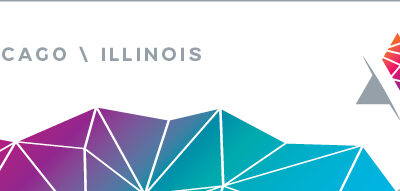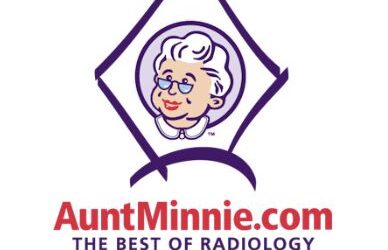Background – The Quality Payment Program
In 2017, Medicare started the Quality Payment Program (QPP) to avoid passing a new law each year to authorize the Physician Fee schedule and to change the reimbursement strategy for participating advisors for non-ACO participants. After passing the Medicare Access and CHIP Reauthorization Act of 2015 (MACRA), the QPP became a new way for Medicare to identify clinicians providing high-value care (or low-value care). It established a zero-sum game of reimbursement changes based on quality reporting.
Clinicians delivering high-value care receive an increase in payment, while clinicians deemed to be delivering low-value care (or have poor measures reporting) face a decrease in future reimbursements. The idea is to use monetary incentives to hold clinicians and organizations accountable for the quality and cost of patient care, influencing payments for about 1 million clinicians every year.
The QPP now consists of the Merit-Based Incentive Payment System (MIPS) and Advanced Alternative Payment Model (APM). We will focus on MIPS. (Within that, there are some differences for radiology groups <15 members, but we will focus on groups >15 members for the numbers and calculations in this article).
MIPS: An Overview
MIPS was designed to tie payments to high-quality, cost-efficient care so that organizations work to improve the processes and health outcomes for their patients. But how is this measured? To evaluate the performance, MIPS tracks performance in four key domains: Quality, Improvement Activities, Interoperability, and Costs. A composite performance score is then calculated annually for each organization or clinician based on the quality data reported to CMS each year.
Based on the composite scores, MIPS then adjusts Medicare Part B payments in a way that is budget-neutral and zero-sum. The amount of funds given to reward high performance cannot exceed the amount of penalties imposed on poor performance. (An exception was made in 2022 when Congress provided a separate pot of $500 million per year for exceptional performers.) The adjustments, however, take place for the payments that will occur two years after the reporting period. For example, the 2022 composite quality scores will be reflected in the 2024 payment schedule on a claim-by-claim basis for professional services.
How It Started
This big shift seemed daunting at first, so CMS started by setting a low-performance threshold for achieving performance neutrality. It was a mere 3 points in 2017. This meant that most clinicians and organizations did not have to report many metrics to achieve neutrality. There were very few that fell below neutral, and therefore, only a small pot of money was available to distribute to winners. CMS estimates that 91.2% of MIPS-eligible clinicians that participated in MIPS expected a positive or neutral payment adjustment for the payment year 2019. This standard was hardly alarming for radiology.
In fact, MIPS is not something most radiologists are too concerned about. Here’s why. The improvement activity is a signed statement that 50% of the group is involved in an improvement-related activity. Cost is automatically obtained. Interoperability is not applicable to radiology, so this 25% is added to the Quality portion of the score. Therefore, Quality is the only place that significantly influences the composite performance score. This was good news when the thresholds were low. But the landscape has changed from 2022 onward, and groups should take note.
How It’s Going
The initial transition policies implemented in 2017 have ended, and CMS has begun to implement its full program. The scores for 2022 will likely look very different for many as radiology is disproportionately impacted. The threshold for positive adjustment has been increased from 60 to 75 points, with the 2024 report showing that the floor has a proposed further increase to 82 points.
The performance thresholds (as of this article’s publication) are as follows: 0-74 (penalty range), 75 (neutral), 75-89 (incentive payment zone), and 90-100 (possible bonus payments). We’ve come a long way from a threshold of 3 points, and radiology practices need to take note. This makes it virtually impossible to achieve a neutral score on national measures alone, even if your performance and reporting are perfect. Additionally, more measures are being eliminated, topped out, point-capped, and devalued. Bonus points and floors have been removed, too. Read more about changes here. The laws have already been passed, so no changes are coming to save radiology from these payment reductions.
CMS estimates that the overall proportion of clinicians who will see a reimbursement penalty will climb to 36.75% with a 75-point floor, and up to 54.31% with a proposed 82-point floor. That’s over half of all participating radiologists. The average group’s MIPS score will drop by 10-15 points this year, which may drop many under the neutral threshold. The gap between the MIPS winners and losers can only widen. This is a major change in reimbursement patterns for radiology groups, and few seem to know that it’s here.
Financial Risk
Let’s look at some numbers. The average positive payment adjustment is estimated to be 2.49%, and the average penalty is estimated to be -1.64%. The maximum positive adjustment will be 6.9%, while the maximum penalty will be 9% (read more here).
Take an example – assume a 25-person radiology group does $20 million in revenue with 50% from Medicare. This puts $10 million in jeopardy. With poor MIPS data reporting in 2022, the practice faces an average annual loss of -$164k and a maximum annual loss of -$900k in 2024. That represents a huge problem. Use our free calculator to determine your practice’s potential losses here.
Additionally, it costs practices money each year to participate in MIPS, leading to even further losses. The mean per-physician cost to practices participating in MIPS is $12,811, according to one paper.
Reputational Risk
In addition to the financial strain, there is reputational risk, too. CMS publishes performance measures through its Physician Compare tool. Every clinician’s annual MIPS score and performance are published about 12 months after the end of the performance year. Patients can see their clinicians rated against national peers on a scale of 0-100. Poor reporting can deflate scores and make performance seem worse than reality.
MIPS Audits
CMS has announced that MIPS data validation and audits will be starting in June 2019 against performance years 2017 and 2018. Guidehouse (former PWC) was awarded a 5-year contract to do the work based on clear legislative authority. Uncovering false claims, fraud, or abuse can lead to fines and/or removal from participation in Medicare.
Take Away
The bottom line is that radiology practices that participate in MIPS have a major problem hiding in plain sight. Their Medicare revenue is in jeopardy, and few people seem to be talking about it. As CMS rolls out the full QPP, the zero-sum game that currently puts over a third of radiology practices’ revenue at risk is only getting more difficult. Increasing neutral thresholds and reductions in measures mean that practices must get on top of their MIPS measures reporting now, or they’ll face major financial and reputational strain.
To avoid negative reimbursement penalties, groups will have to participate in Qualified Clinical Data Registries, if they are not already. The government is not adding many new national measures and is moving to even more complicated measures starting in 2023 called MIPS Value Pathways (MVPs). Reporting to QCDRs presents an alternative way to boost composite scores and avoid negative payments. (As of now, there are only two radiology-specific QCDRs – the ACR and MSN Healthcare Solutions.) Reporting both national and QCDR measures will be the only way to get above the neutral threshold. The MIPS and MVP programs will become significantly more difficult and expensive, so groups must act now.
If you’re interested, Radloop can help.
See how Radloop can help you avoid a negative payment adjustment using our automated Measures Extractor (ME)tool. We use an AI algorithm to automate and streamline the process of measures extraction and reporting to maximize your chances of a positive payment adjustment from CMS.




